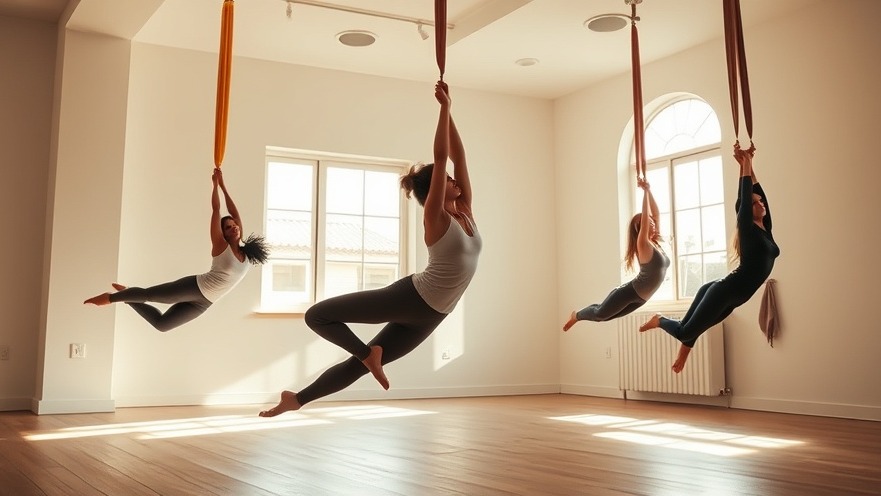
Find Serenity in Suspension: The Magic of Aerial Yoga
Aerial yoga—often referred to as anti-gravity yoga—offers a refreshing approach to stress relief through innovative movements and poses. By incorporating hammocks suspended above the ground, aerial yoga combines the foundational elements of traditional yoga with acrobatics and playful exploration. This effective exercise not only promotes physical strength and flexibility but also enhances mental well-being, making it a popular choice among those seeking relief from the daily pressures of life.
Releasing Stress and Embracing Joy
Utilizing the comforts of a suspended hammock, aerial yoga allows practitioners to experience a gentle floating sensation that feels utterly liberating. The dynamic interplay of gravity and support fosters deeper relaxation and helps to alleviate tension. Research has indicated that such activities can significantly lower cortisol levels, the hormone commonly linked to stress.
This unique form of exercise can catalyze a sensory shift; by challenging the body to maintain balance, practitioners redirect their focus away from stressful thoughts. Furthermore, the gentle swings and movements promote the release of endorphins, enhancing mood through physiological benefits, which adds a fun and playful aspect to a fitness routine.
10 Aerial Yoga Poses for Immediate Stress Relief
Let’s dive into ten easy-to-execute aerial yoga poses designed to deliver instant relief and rejuvenation:
Supported Savasana (Corpse Pose): Rest comfortably in the hammock, allowing it to cradle your body while you breathe deeply, fostering relaxation.
Aerial Child’s Pose: Kneel inside the hammock and fold forward, feeling the calming support as your body decompresses.
Aerial Supported Inversions: Carefully invert and let the hammock support you, giving a gentle respite to your back and joints.
Aerial Gentle Swings: Sit back and sway side to side, engaging in rhythmic motion that releases built-up tension.
Aerial Hip Openers: Utilize the hammock as support to gently open your hips, allowing for a deep stretch while remaining safely cradled.
The Broader Benefits of Aerial Yoga
Beyond mere relaxation, aerial yoga presents a myriad of benefits, especially valuable for anyone with a busy lifestyle. This practice is accessible even to beginners and facilitates a unique form of body awareness that can enhance traditional yoga methods. The essence of aerial yoga lies in its playful nature, encouraging participants to explore their capabilities without the fear of falling or failing.
How Aerial Yoga Enhances Mindfulness
The notion of mindfulness is integral to both yoga and overall well-being. Aerial yoga encourages practitioners to focus keenly on their breathing and body movements. The gentle draping of the fabric holds significant grounding qualities and a sense of safety, allowing one to be fully present and mindful, which is crucial for mental health.
What to Expect From Your Aerial Yoga Journey
As with starting any new form of exercise, getting accustomed to aerial yoga can take time. Beginners may feel awkward or uncertain, but it’s essential to remember that mastering the techniques will come naturally with practice. Each pose deepens your understanding of how to interact with both your body and mind constructively.
Bringing Aerial Yoga Into Your Routine
Integrating aerial yoga into your weekly routine can serve as a delightful escape from everyday tension. Whether you attend a class or establish a dedicated space at home, the hammock serves as a personal sanctuary where you can unwind and rejuvenate.
Your Next Steps Towards Relaxation
So, are you ready to take the plunge and lift your spirits with aerial yoga? Embrace the opportunity to promote your mental and physical wellness through this empowering form of exercise. As you suspend your stresses away, you will not only witness improvements in your fitness but cultivate a renewed sense of joy and relaxation in your life!
 Add Row
Add Row  Add
Add 




Write A Comment